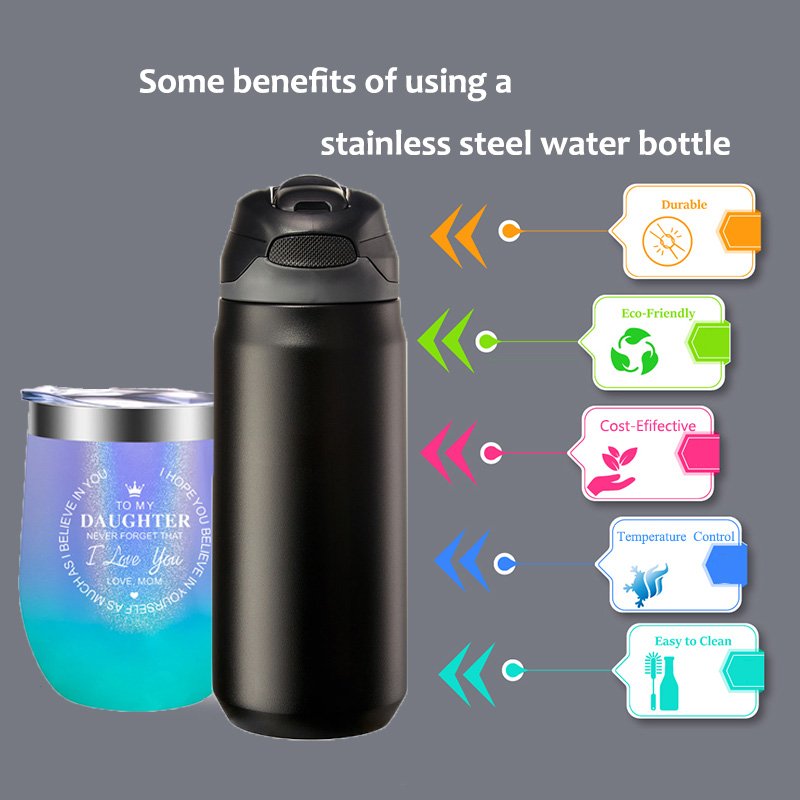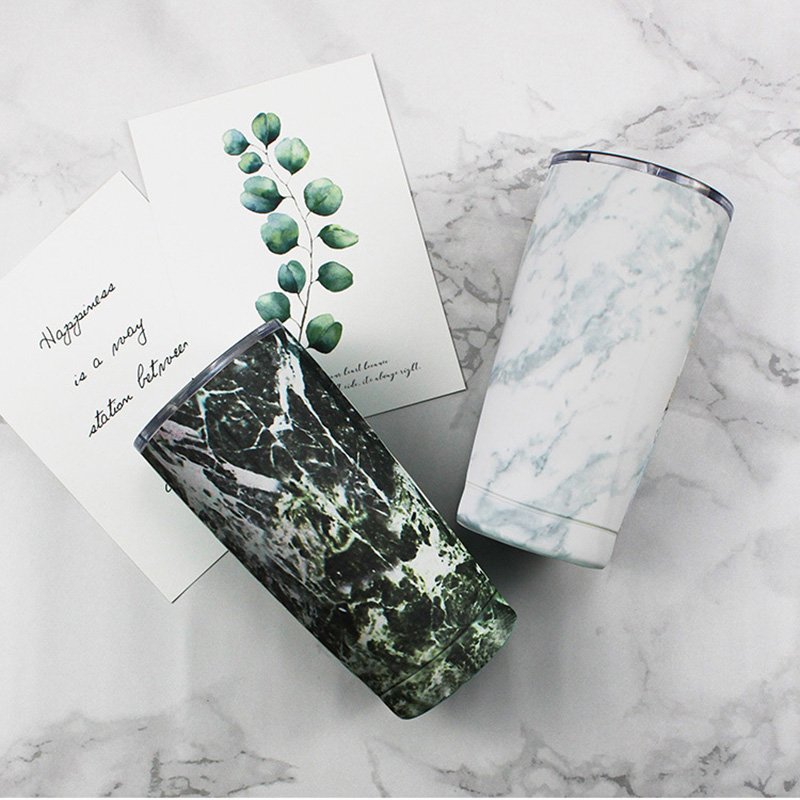Introduction to Ceramic Water Bottles
Ceramic water bottles have steadily gained popularity as a sustainable and stylish alternative to traditional plastic and metal counterparts. The history of ceramic water bottles can be traced back to ancient civilizations, where ceramics were commonly used for storing and transporting liquids. Over time, the technology and design of ceramic containers have evolved significantly, resulting in the modern, sleek, and functional ceramic water bottles we see today.
The materials used in these water bottles are primarily natural clay, which is processed and fired at high temperatures to create a durable and non-porous finish. This firing process not only strengthens the ceramic but also makes it safe for storing beverages, as it prevents the absorption of flavors and odors. Additionally, many ceramic water bottles are coated with a non-toxic glaze that further enhances their durability and aesthetic appeal.
One of the main factors that set ceramic water bottles apart from their plastic and metal counterparts is their environmental impact. Unlike plastic bottles, which contribute significantly to pollution and landfill waste, ceramic water bottles are reusable and often made from eco-friendly materials. They do not leach harmful chemicals into beverages, making them a healthier choice for consumers. Moreover, ceramic bottles are often more aesthetically pleasing, with a wide range of designs and colors that cater to various tastes and preferences.
The manufacturing process of ceramic water bottles involves several steps, starting with the shaping of the clay into the desired form, followed by drying, firing, and glazing. This meticulous process ensures that each bottle is unique and of high quality. As consumers become increasingly aware of the environmental and health impacts of their choices, the demand for eco-friendly and sustainable products has grown. This shift in consumer behavior has significantly contributed to the rising popularity of ceramic water bottles.
In conclusion, the combination of sustainability, health benefits, and aesthetic appeal makes ceramic water bottles an attractive choice for those looking to make a positive impact on the environment while enjoying a stylish and functional product.
Benefits of Using Ceramic Water Bottles
Ceramic water bottles have increasingly become a popular choice for those seeking sustainable and stylish hydration solutions. One of the primary benefits of ceramic water bottles is their environmental friendliness. Unlike plastic bottles, ceramic bottles are made from natural, non-toxic materials that do not leach harmful chemicals into the water. This makes them a safer alternative for both the environment and personal health. By opting for ceramic, consumers can significantly reduce their reliance on single-use plastics, thereby contributing to the reduction of plastic waste that often ends up in oceans and landfills.
The health benefits of ceramic water bottles are another compelling reason for their rising popularity. Ceramic is an inert material, meaning it does not react with the liquids it contains. This characteristic ensures that the water remains pure and free of contaminants, unlike some plastic bottles that can release harmful chemicals such as BPA (Bisphenol A) and phthalates over time. The absence of these chemicals in ceramic bottles provides peace of mind for users who prioritize their health and well-being.
Aesthetically, ceramic water bottles offer a unique and stylish alternative to traditional plastic and metal bottles. They are often available in a wide range of designs, colors, and finishes, allowing individuals to express their personal style. Customizable options further enhance their appeal, making them a popular choice for personalized gifts or branding purposes. The tactile experience of holding a ceramic bottle, combined with its visual appeal, adds a touch of elegance to daily hydration routines.
In summary, the benefits of using ceramic water bottles encompass environmental, health, and aesthetic advantages. Their natural, non-toxic composition and ability to reduce plastic waste make them an eco-friendly choice, while their inert nature ensures the purity of the water. Additionally, their stylish and customizable designs offer a visually pleasing alternative to conventional bottles. As awareness of sustainability and health continues to grow, ceramic water bottles are poised to become a staple in eco-conscious lifestyles.
Comparing Ceramic Water Bottles to Other Types
When evaluating ceramic water bottles against other common variants like plastic, stainless steel, and glass, several factors such as durability, weight, taste preservation, and cost come into play. Each type of water bottle possesses unique characteristics, catering to different user preferences and needs.
Durability: Ceramic water bottles offer a balanced blend of sturdiness and elegance. While not as indestructible as stainless steel, ceramic is more resilient than glass, which shatters easily upon impact. Plastic bottles, though highly durable, often wear down over time, leading to potential leaching of harmful chemicals into the water.
Weight: In terms of weight, ceramic water bottles sit comfortably between the heavier glass and the lightweight plastic variants. Stainless steel bottles are also relatively heavy, particularly when designed with insulation. Therefore, ceramic bottles provide a manageable weight, making them suitable for daily use without the cumbersome bulk.
Taste Preservation: A significant advantage of ceramic water bottles is their ability to preserve the natural taste of the water. Unlike plastic, which can impart unwanted flavors, or stainless steel, which may retain metallic aftertastes, ceramic ensures that beverages remain pure and unaltered. Glass shares this benefit but is less practical due to its fragility.
Cost: Cost-wise, ceramic water bottles are often more affordable than high-end stainless steel options but pricier than basic plastic bottles. Glass bottles, depending on design and brand, can vary widely in cost. The investment in a ceramic bottle, however, is justified by its aesthetic appeal and functional benefits.
Pros and Cons: Each type of water bottle has its pros and cons. Plastic is cost-effective and lightweight but potentially harmful and environmentally unfriendly. Stainless steel is durable and offers good insulation but can be heavy and expensive. Glass is taste-neutral and elegant but fragile. Ceramic water bottles strike a balance, offering a stylish, sustainable, and taste-preserving alternative, albeit with moderate weight and cost considerations.
Expert opinions and user reviews consistently highlight the growing preference for ceramic water bottles. Users appreciate their aesthetic design, environmental benefits, and ability to maintain beverage purity. Experts commend their sustainability and the enhanced drinking experience they provide.
Caring for Your Ceramic Water Bottle
Proper care and maintenance are essential for ensuring the longevity and optimal performance of your ceramic water bottle. Regular cleaning is crucial to prevent any buildup of bacteria or odors. To clean your ceramic water bottle, hand wash it with warm water and mild dish soap. Avoid using abrasive scrubbers or harsh cleaning agents, as they can damage the ceramic surface. For a deeper clean, you can use a mixture of baking soda and warm water to scrub the interior gently.
One of the potential risks associated with ceramic water bottles is breakage. While ceramic is a durable material, it is not immune to cracks or chips. Handle your ceramic bottle with care, especially when it is full. Avoid exposing it to sudden temperature changes, such as pouring boiling water directly into a cold bottle, as this can cause thermal shock and lead to cracking. Additionally, always check the bottle for any signs of damage before use, and discontinue use if any cracks or chips are visible.
Choosing the right ceramic water bottle involves considering your individual needs and preferences. Look for a bottle that is ergonomically designed for easy handling and has a secure, leak-proof lid. If you often carry your bottle in a bag, consider one with a protective sleeve to guard against potential impacts. Protective sleeves, often made from materials like silicone or neoprene, can provide an added layer of security and insulation.
Investing in accessories can further enhance your experience with a ceramic water bottle. Cleaning brushes with soft bristles are ideal for reaching the interior of the bottle and ensuring a thorough clean. Additionally, consider a bottle with a wide mouth for easier filling and cleaning. Some ceramic water bottles also come with additional features like built-in filters or infusers, which can be beneficial depending on your hydration preferences.
By following these guidelines and incorporating the right accessories, you can enjoy the benefits of your ceramic water bottle for years to come, making a sustainable and stylish choice for your hydration needs.




In prunkvollen Spielhallen und schimmernden Casino-Räumen herrscht eine besondere Etikette
– ein feiner, aber bedeutsamer Dresscode, der weit über das reine Ankleiden hinausgeht.
Nehmen Sie für Ihr Kostüm einfach die typischen Themen der
Kartenspiele auf und überzeugen Sie im Casino-Kostüm als Herzkönigin oder als
tatsächliches Spielblatt in Form einer Karte. Entscheiden Sie sich zum Beispiel
für einen coolen Anzug – entweder mit Spielkartenmotiv oder einfarbig!
Das kommt heute nur noch selten vor, da mindestens für das Automatenspiel fast überall moderate Kleidungsregeln gelten. Früher konnte es schon einmal passieren, dass ein Glücksspiel-Fan aufgrund unpassender Haare oder einer
fehlenden Krawatte überhaupt nicht ins Casino gelassen wurde.
Herren tragen Smoking und Fliege, Damen lange Abendkleider oder elegante Cocktailkleider.
Es gibt verschiedene casino dresscodes, die je nach Spielstätte und Anlass variieren. Casinos sind Orte, an denen Stil auf Tradition trifft, und der casino dresscode ist ein wichtiger
Bestandteil dieses Charmes. Man kann Roulette, Blackjack und
Co. nicht nur in Online Casinos mit echten Dealern spielen, sondern bei manchen Anbietern auch einen Bonus mitnehmen.
Für viele ist ein Abend in der Spielbank aber auch weit
mehr, als an den Spielautomaten oder den Tischspielen auf seine
Kosten zu kommen. Ausgeschlossen sind jedoch kurze Hosen, Kopfbekleidungen und Kapuzenpullis.
Sowohl für Frauen als auch Männer ist hier schon eine gepflegte
Freizeitkleidung ausreichend. Hier ist jeder willkommen, ganz
gleich mit welcher Bekleidung. Die Frauen sind hier etwas flexibler und können entweder
ein Kleid, eine Hose oder einen Hosenanzug tragen.
References:
https://online-spielhallen.de/admiral-casino-cashback-ihr-weg-zu-mehr-spielguthaben/